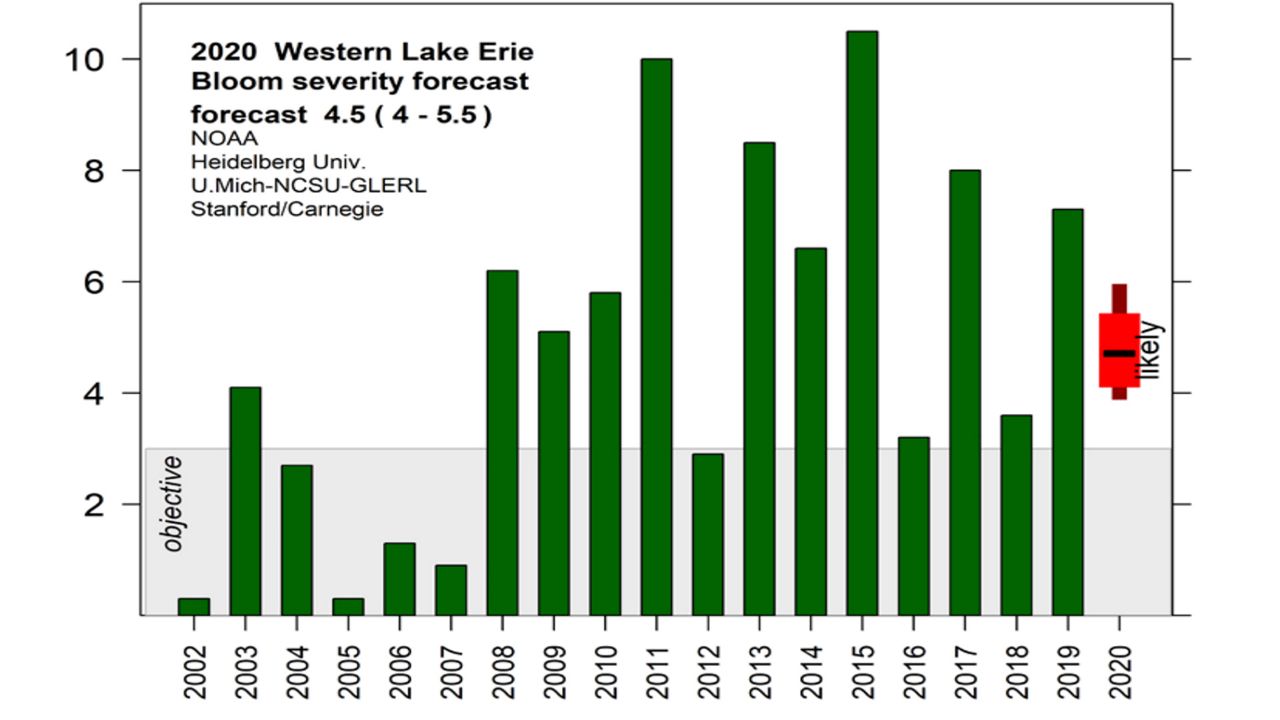CLEVELAND, Ohio — Swimming, fishing and relaxing—all the things residents who live near Lake Erie look forward to doing each summer.
But toxic algae blooms are popping up again this July, posing a health threat while also hurting the region's summer economy which is already struggling due to the pandemic.
“We don't want the reputation that Lake area is not a tourist destination because of these harmful algal blooms because that affects our pockets in terms of jobs,” said Crystal Davis, director of policy and strategic engagement for the Alliance for the Great Lakes.
According to the Alliance for the Great lakes, the toxins created by harmful algae blooms are caused in large part by runoff pollution. Slimy and green, the blooms are visible in certain areas along Lake Erie.
The National Oceanic and Atmospheric Administration and its partners are forecasting that western Lake Erie will experience a moderate harmful algal bloom this summer, expected to measure around 4.5 out of 10 on the severity index.

An index above 5 indicates more severe algae blooms. The blooms occur when rainfall washes fertilizer and manure spread on large farm fields into streams that flow into Lake Erie. The toxins threaten drinking water and pose serious health risks to humans and animals, and negatively affect the environment.
In 2014, residents of Toledo awoke to urgent warnings not to drink or use their tap water. And some community leaders said the fear caused by not having clean water for days, back then, is still very much present now six years later.
“It’s a human right to have water," said Randall Carter, the pastor of Resurrection Baptist Church in Toledo.
Carter said this is a heightened concern as the COVID-19 crisis deepens, and access to clean, safe, affordable water for drinking and hand-washing is more critical than ever. Carter credits Toledo's Department of Public utilities for being helpful.
“They’re working with us to develop an affordability plan. So that we can work out a system where people can afford it based on their income,” said Carter.
In 2019, Ohio Gov. Mike DeWine released a comprehensive water quality plan called H2Ohio. Joy Mulinex, Lake Erie commission director at the Office of the Governor, thinks the plan is a progressive path forward to meeting the goal set for 2025 of reducing runoff pollution by 40 percent. She said more than 2,000 farmers have signed up for agricultural best management practices, but in terms of statewide mandates, it’s hard to find a one size fits all solution for farmers.
“You have a mixture of farm fields from traditional road crops to livestock, you have some applying commercial fertilizer, some using animal manure, and they all have different soil types, they all have different geographies, and so we’re trying to provide some flexibility knowing that what works on one farm, may not work on another,” said Mulinex.
“I applaud Governor DeWine's leadership in terms of making a sizable down payment on the issue with some incentives for the agricultural community with H2Ohio,” said Davis. “But we know that there's going to have to be some, some strict laws in place that really crack down on some of the bad actors, so we can get a handle on this issue.”



